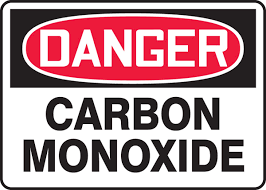On 26 January, Ling Wang and Qinzi Xu, two biomedical scientists at the University of Pittsburgh in Pennsylvania, placed a mouse under a chemical hood, anesthetized it, and hooked it up to monitors. Wang closed the hood and Xu turned on a switch to deliver 3% carbon monoxide (CO)—a concentration so high that it would kill most humans almost immediately—for 4.5 minutes. The mouse’s blood pressure dropped precipitously and its heart rate turned irregular. Then, through an intravenous tube, they delivered a molecule their lab had developed. Moments later, the animal’s blood pressure began to rise and it recovered. This was a first: There are no known antidotes for CO poisoning.
Given off by engines, heaters, and fireplaces, the tasteless, odorless gas sends more than 50,000 Americans to the emergency room—and kills approximately 500—every year. CO poisons in at least two ways. First, it binds tightly to the hemoglobin in blood and prevents it from delivering oxygen throughout the body. Second, it inhibits the process of respiration in mitochondria, cells’ powerhouses. About the best physicians can now offer in cases of poisoning is a treatment developed more than 50 years ago: high-pressure oxygen.
“People have attempted some biochemical tricks to free carbon monoxide from hemoglobin, but they don’t really work. That’s why we literally have a therapy that’s as old as oxygen,” says Lance Becker, a physician at the Hofstra Northwell School of Medicine in Manhasset, New York. “So the idea of finding something that might work better, faster, and stronger is very appealing.”
That something, described in this week’s issue of Science Translational Medicine, is neuroglobin—a protein typically found in the brain and retina that protects cells from injury by binding oxygen and nitric oxide—repurposed into a CO scavenger The Pittsburgh research team, led by critical care physician Mark Gladwin, was originally studying its function when they noticed that isolated neuroglobin molecules almost always had CO, a natural byproduct of hemoglobin breakdown , bound to them. “I thought this was bad news at the time, because we needed to get the CO off the neuroglobin in an extra experimental step,” Gladwin said. But when a colleague asked in 2012 whether there was any antidote for CO poisoning, he realized that his lab might already have an answer.
In the mouse study, the group engineered a mutated version of neuroglobin that binds CO 500 times more tightly than it binds hemoglobin. The CO-laden molecules are excreted through the kidneys. When given within 5 minutes of a lethal dose of CO, the neuroglobin saved 87% of mice, the group reports. “This agent is phenomenal: It can rip carbon monoxide right off the hemoglobin,” says Lindell Weaver, a doctor who treats patients with high-pressure oxygen at Intermountain Healthcare in Salt Lake City.
Weaver notes, however, that CO poisoning also activates a series of immunological pathways that cause lingering damage to the nervous and cardiovascular systems. “The long-term effects of carbon monoxide are complicated, so just removing [it] might not be enough,” he says. “But this agent could be life-saving if it’s administered immediately.”
Gladwin’s team now plans to further explore the efficacy and safety of the neuroglobin in rats, larger mammals, and, eventually, patients. One challenge will be making the neuroglobin scavenger in the amounts needed for use in the field and clinic. The U.S. Food and Drug Administration, Gladwin says, has already promised an expedited review of the treatment given that CO poisoning is a “serious unmet need.”







